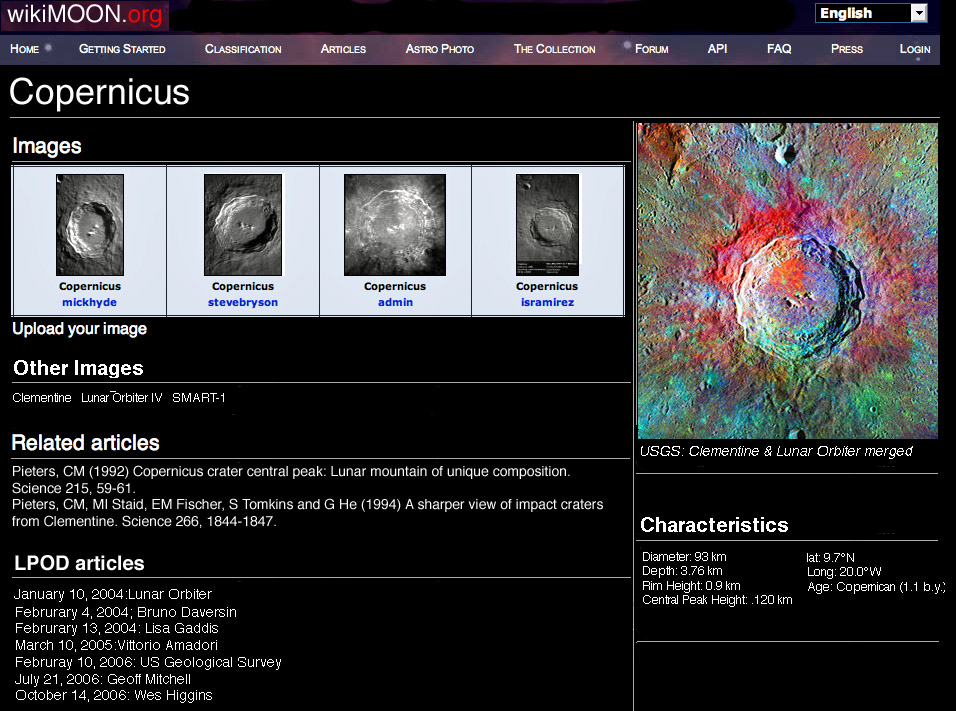
image inspired by WikiSky
I just discovered the relatively new website WikiSky. This is a sky chart display program (not yet a planetarium program) that goes seamlessly from the chart to images from the Sloan Digital Sky Survey (SDSS) for the 1/4th sky where they are available. As your cursor moves over stars, galaxies, etc, windows pop up giving basic ID info. What is nice is a feature that allows anyone to upload their images and bibliographic material (including article abstracts) that are acessible from the info box.
This is a model, an inspiration, for the lunar data system I have been trying to create. I would love to have a program that starts with a global map - right now only the Clementine mosaics and USGS airbrush charts exist - that you click on for various levels of enlargement and zooming to features of interest. It would have co-registered images from Clementine, Lunar Orbiter, SMART (if they are every released) and you. Info boxes could pop up with feature ID and brief descriptions, with links to close-up images and relevant publications. And like WikiSky it would be possible for anyone to add images or other information that become part of the site.
Some of these capabilities are already available - the best and most exhaustive is The Virtual Moon Atlas of Christian Legrand and Patrick Chevalley which offers a huge selection of images and data files that can be mapped on the surface. The Pro version of this wonderful software does not run on my Intel Macintosh (even with the software to emulate a PC), and it requires a significant PC too. I would love it if VMA ran online like WikiSky.
The LTVT software of Jim Mosher provides a key ingredient for the Moon site I envision because it remaps images to a geographic grid so they can be compared with or overlaid on other datasets. Indexing of LPOD and cataloging of crater dimensions by Kurt Fisher provide data sets that could be included, and LPOD itself has many types of images, catalogs and bibliography that could be used. But all of these resources are scattered and not interconnected into a smooth system like WikiSky. WikiSky is probably funded by a significant federal grant and probably has a fair number of professionals developing it. A WikiMoon could probably be constructed by a couple of amateurs on a weekend or two, and then populated with images and data by many others!
Technical Details:
All of the images come from LPOD and LPOD Photo Gallery.
Related Links:
Rükl plate 31
Yesterday's LPOD: Werner, Werner, Werner, Werner, …
Tomorrow's LPOD: Nothing to Fear Here
COMMENTS?
Register, Log in, and join in the comments.



